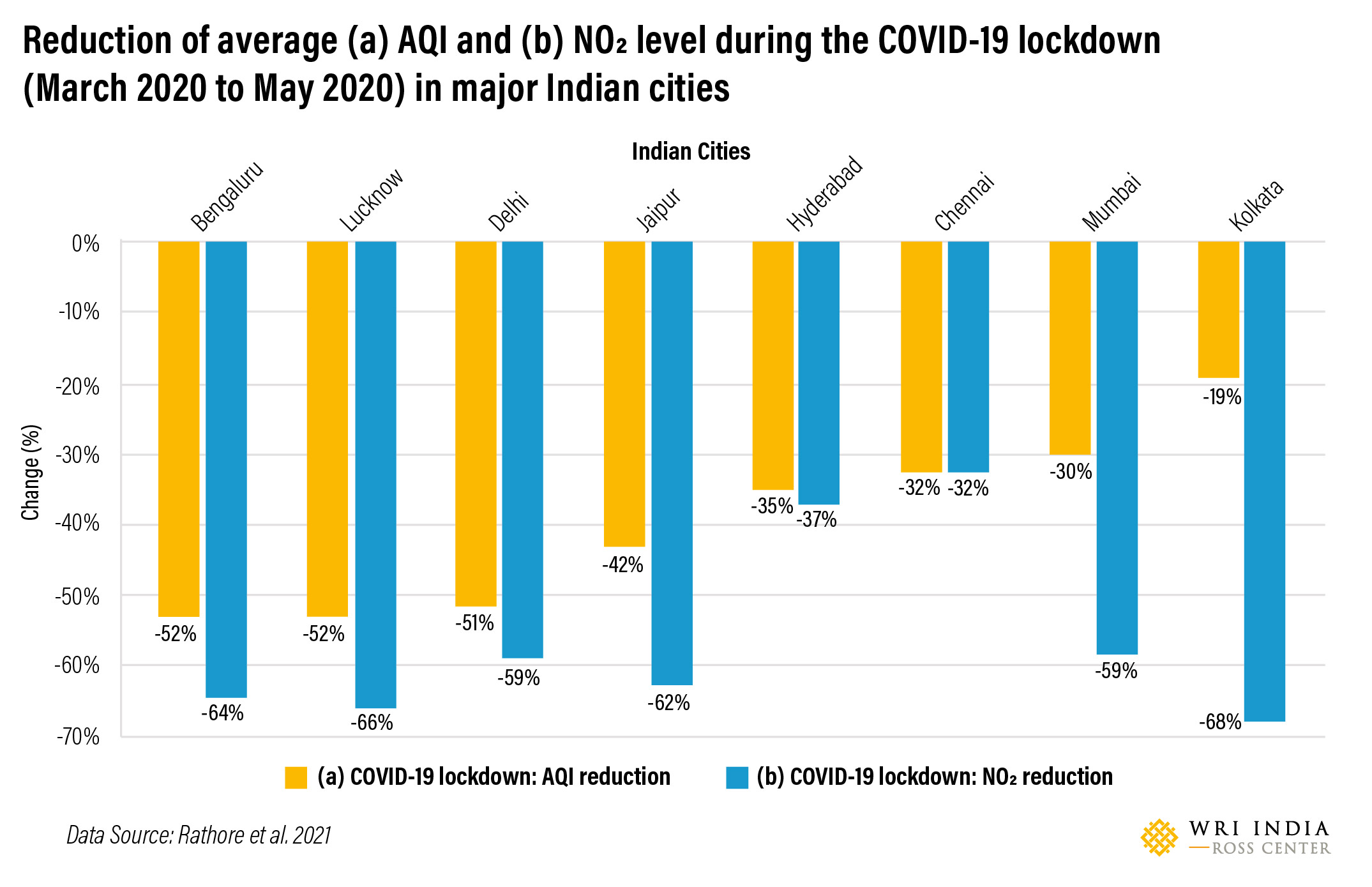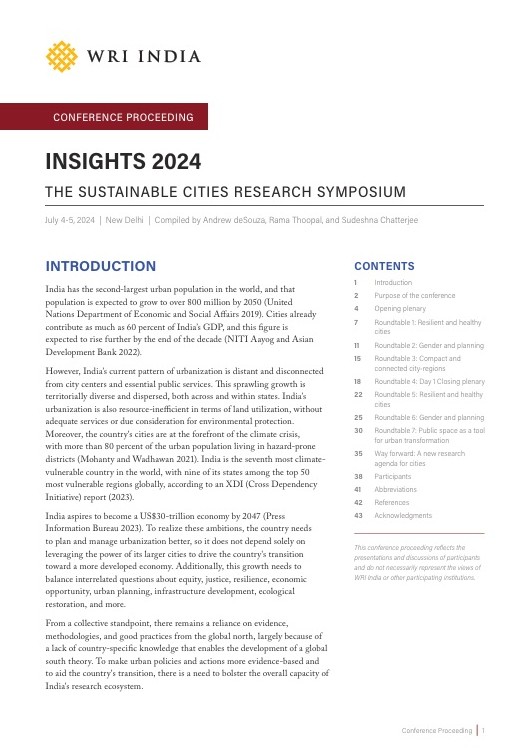Abating Transport Emissions With Electric Vehicle Adoption in India
by , e -
The COVID-19 pandemic brought the world to a standstill, but if there was any silver lining to this catastrophe, it was the slowdown in greenhouse gas (GHG) emissions experienced during the second quarter of 2020. Across the globe, as clear blue skies ruled the COVID-19 lockdowns many countries glimpsed the potential benefits electric vehicles (EVs) can provide with zero tailpipe emissions.
India, being home to 21 out of the 30 most polluted cities in the world, witnessed a 54% reduction in harmful emissions during the lockdown, of which tailpipe emissions are a major component. Air pollution poses a grave risk with 35% of the country’s population exposed to emissions that exceed five times the standards set by the World Health Organization (WHO). According to the Health Effects Institute's report, particulate matter pollution leads to over 1.24 million or 12.5% of total deaths in India annually. This highlights the urgency to transition to zero-emission transportation solutions with its potential to prevent lakhs of premature deaths due to air pollution and save billions in health costs.
Furthermore, with India’s commitments at the COP26 summit to achieve the net-zero emissions status by 2070 and lower its emission intensity by 45% from 2005 levels by 2030, EVs could help realize these goals and play a pivotal role in India’s green narrative.
Emissions from Road Transport: Impact of the Lockdown
Passenger travel accounts for a 62% share of emissions from road transport. During the nationwide lockdowns in India from March 2020 to May 2020, the harmful nitrogen dioxide (NO2) levels in the country dropped to a 20-year low. Several studies have found a significant dip in the Air Quality Index (AQI) and concentrations of NO2 (see Figures 1a and 1b) in major Indian cities during this period. Since the latter is primarily released by fuel consumption from vehicles (particularly in traffic congestion), power plants and other industrial activities, it is a measurable indicator for tailpipe emissions. It later reacts with atmospheric chemicals to form particulate matter 2.5 (PM2.5), which is another harmful chemical associated with respiratory ill-effects in human beings. As power plants continued to function during the lockdowns, a major share of this reduction in nitrogen dioxide reductions can be attributed to halted transportation sectors across the country.

However, with life coming back to normalcy, NO2 emissions increased again in all eight of India's most populated cities, suggesting a case to transition to cleaner and sustainable mobility.
Reduction in Emissions due to Electric Vehicles: The Journey Ahead
Vehicle emissions can essentially be divided into two categories:
- Tail-pipe emissions, which contribute to smog, haze, and health problems; and greenhouse gases.
- GHGs emissions, such as carbon dioxide and methane contribute to global warming and climate change.
Since tailpipe emissions account for 65-80% of an automobile's emissions, and fuel supply accounts for corresponding indirect emissions; accelerating the transition to EVs and renewable energy can help in achieving a cleaner future.
At present, thermal power plants account for roughly 70% of India’s electricity generation. While earlier it was believed that EVs could lead to further GHG emissions because of increased use of non-renewable electricity, raw material mining, and lack of vehicle energy efficiency; recent studies have found that even EVs that plug into thermal power plant grids emit fewer greenhouse gases than fossil fuel-based cars.
With the existing electricity generation conditions, the lifetime emissions of electric cars registered in India today are 19-34% lower than for petrol or diesel, or CNG cars. A pivotal reason for this is the increased traction in renewable energy generation in India, which stands at 100 GW (as of August 2021), and the increased efficiency in electricity generation and EV batteries over the years. Globally, just 5% of total power plants account for a staggering 75% of carbon emissions from electricity generation. Using emission mitigation strategies for these hyper polluting power plants can further help improve the emission reduction potential of EVs.
In other words, the transition to an electric mobility future need not wait for a complete power sector decarbonisation as benefits of a simultaneously decarbonizing grid can be captured progressively.
In conclusion
The time is more than ripe for an EV revolution in India and future progress needs to be driven by both innovation and policy measures. Some key strategies that can help fast-track the transition to EVs are as follows:
- Targeting price-sensitive Indian consumers using feebates in the form of vehicle registration rebates or exemptions on newly purchased EVs, and offering incentives on EV purchases.
- Addressing the shortage of adequate charging infrastructure, which requires huge investments, through an economy-wide carbon credit policy could be a cost-effective approach. A carbon credit represents a reduction of one tonne of carbon dioxide (CO2) emissions and could be sold by EV charging service providers to firms or companies looking to go carbon neutral, enabling the former to generate higher returns on investment.
- Implementing a state-wide zero-emission vehicle (ZEV) mandate requiring original equipment manufacturers (OEMs) to register and sell a minimum share of EVs and gradually increasing this over time.
Vehicle electrification is bound to play a pivotal role in emission reduction from India's road transportation sector and supporting the fight against climate change. As a developing country, with much of its population to be maximally impacted by climate change, India needs to adapt to these changes with the resources at hand, to ensure that recovery from the pandemic is not at the expense of a return to previous levels of air pollution.
Views are personal. Anshika Singh is a consultant, and Anuja Jaduan was an intern with the Electric Mobility team in the Sustainable Cities and Transport program at WRI India.


